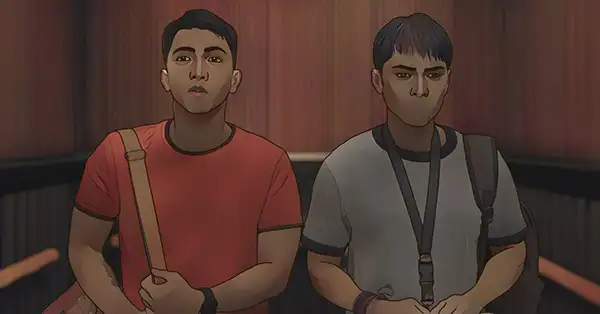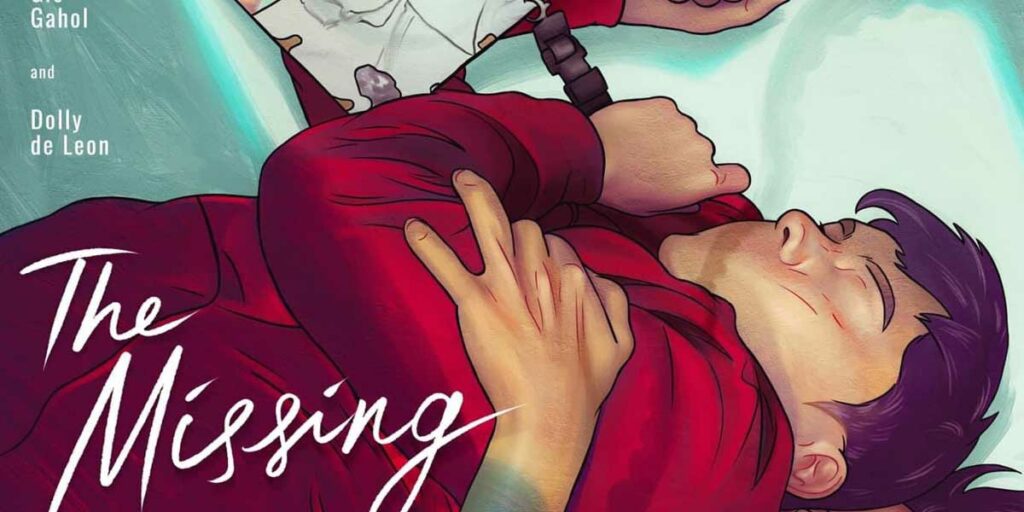Writer/Director Carl Joseph Papa’s The Missing paints a thoughtful story on the lasting effects of childhood trauma and how to overcome lifelong nightmares.
Childhood trauma is something that stays with those impacted by it their entire lives. It rears its ugly head in the most unexpected of ways and can create division amongst the closest of relationships. Carl Joseph Papa’s newest animated film, The Missing, is incredibly rich and beautifully told story about the lasting effects of childhood trauma, sexual abuse and the burden of keeping heavy secrets from those you want to share them with the most.
The Missing follows Eric (Carlo Aquino), a young man working as an animator with a seemingly normal life. He is passionate about his profession, he regularly speaks with his mother, he even has a work crush called Carlo (Gio Gahol). However, upon being introduced to Eric, the audience sees his character has been drawn without a mouth, making his main source of communication a dry erase board. Eric has extreme difficult time trying to communicate with those around him because of his inability to speak as a lingering effect of the sexual abuse he faced at the hands of his uncle, something he has kept a secret his entire life.
One day, Eric’s mother, Rosalinda (Dolly De Leon), asks him to check up on his uncle after work since he hasn’t been responding to her messages. Carlo gives Eric a ride as a thanks for helping him work late, but when the two young men enter Eric’s uncle’s apartment they find him dead in his bedroom. This sends Eric down a rabbit hole of nostalgia where his past meets his present, and demons that Eric thought he had long gotten rid of have come back for him once again.
The way in which Carl Joseph Papa has created this deeply nuanced film is something that exists in singularity. The animation of the film makes every shot feel like a stand alone piece of art. It blurs the line so cleverly between the younger and current version of Eric to show the way in which sexual abuse victums can regress to the age and cycles they had when they were abused through. In a clever move to have the audience understand Eric’s mental state as a child, whenever the film flashes back in time, the animation follows in Eric’s mental suit and regresses to a far more simplistic style of animation.

The style is reminiscent of drawings that a child may do, really making the viewer understand just how young and vulnerable Eric was at the time he was abused. Additionally, when Eric’s uncle enters early scenes within his childhood, he literally erases any animation he touches, showing how his uncle removed his sense of security and safety within his home. This is exactly what makes The Missing so powerful. The film works to not only make the audience understand what Eric has been through, it shows what the abuse has taken from him in a literal sense.
The Missing constantly displays the ways in which childhood trauma and the triggers that bring it to the surface can continually impact those like Eric, who are a victim of it. While when we meet Eric, he both physically and figuratively does not have the ability to share his voice, throughout the film, as he continues to remember his sexually abusive relationship with his uncle, he begins to lose much more of himself.
He loses his ear, his eye, his hand and more, as a visual representation of the ongoing damage that Eric still has to deal with as an adult who is a victim of sexual abuse. Even though his uncle is now dead and he is surrounded by career and relationship security, the trauma continues to take from him.
The Missing utilizes its breathtaking animation to make its audience understand the ways in which Eric struggles to grapple with the abuse he has endured as the triggers around him force him to regress back to the young boy he was when his uncle was abusing him. When Eric finds his uncle’s body, he begins to experience the same recurring nightmare he did as a child that aliens are coming to abduct him. The film poses this as a form of escape Eric created as a young child in order to deal with the horrific abuse he endured that he didn’t know how to tell anyone about.
Only Eric can see these aliens and he is unable to communicate to those around him the trauma and terror it evokes in him, because this threat is not visible to anyone but him. He has to physically fight these aliens off as these dreams are real to him but his loved ones struggle to understand what he is going through and how to help. This is Eric’s biggest challenge, he cannot tell the people he trusts most about what has happened to him, he cannot find a way to express himself.
The Missing is experimental yet sensitive in the way it deals with the impact of sexual abuse and trauma cycles. The film gives endless grace to Eric and the way he is desperately trying to defeat his demons, alongside the people who love him. This is the most creative way I’ve seen a film deal with such a heavy, yet important topic. While Eric doesn’t speak throughout the film, the animation makes it so the audience completely understands what is going on with him. It’s a film that will make you more empathetic and a film that will make you understand the amount of strength it takes to be vulnerable.
The Missing has been submitted as the Philippines’ official entry for International Feature at the 96th Academy Awards, which would make it the first film from the country to be nominated.

